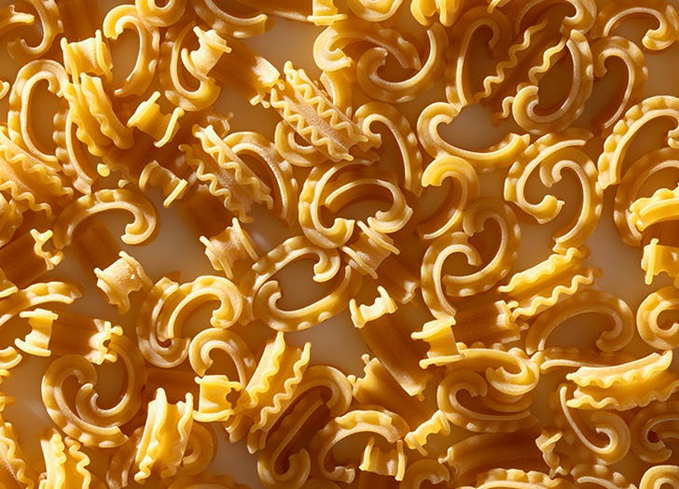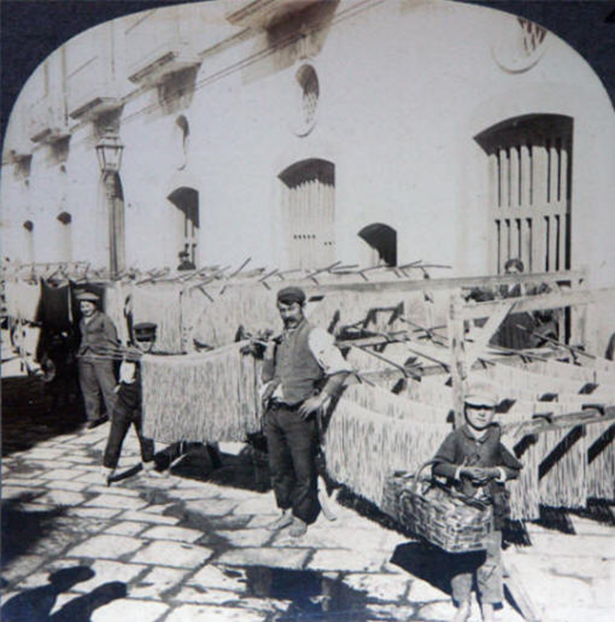
Charles Goulding and Preeti Sulibhavi serve up a look at 3D printing for the future of pasta.
There are very few foods that are consumed in such volume and with such relish as pasta. As the adage goes, “nothing says Italy like its food, and nothing says Italian food like pasta.” Marco Polo did not bring this food back from China as it was already there in Polo’s time.
Pasta goes back hundreds of years to the Etrusco-Roman era, where pasta was not boiled but baked and it was referred to as “lagane” (Latin for lasagna). Fast forward to today and we see pasta leaping into various shapes and forms.

“A Product of Nearly Three Years of Research and Development”
From a combination of innovation shared between Sfoglini of New York and Dan Pashman comes cascatelli (Italian for “waterfalls”). Cascatelli is designed and developed to improve the quality of pasta in three key areas: sauceability (how readily sauce adheres to the pasta shape), forkability (how easily the pasta shape is grabbed by the fork and remains), and toothsinkability (how satisfying it is to sink one’s teeth into).
“Mission: ImPASTAble”
In his five-episode podcast, “Mission Impastable,” Pashman describes, from concept to product, his development of cascatelli pasta. The podcast features lively debates, expert foodies, and even a trip to North Dakota State University’s pasta lab where there is in fact a machine that measures the bite force required to consume various pastas.
3D Printing and Pasta
Cascatelli’s shape is inspired by some of Pashman’s favorite existing pasta shapes (e.g., bucatini and mafalde). This brings us to suggest using 3D printing to create this unique pasta shape.
Barilla
3D printing is not new to the pasta world. Founded in Italy in 1877, family-owned and operated for four generations, Barilla, the world’s largest pasta company, has been busy making pasta relevant in today’s world. In fact, about six years ago Barilla created a fun competition for finding new shapes of pasta using 3D printing technologies. Entries for the Smart Pasta competition must include a 3D printable design and brief explanation. Utilizing 3D printing technologies for pasta improves the design quality, texture and shapes of pasta. The thickness of the pasta walls also matters for optimal cooking.

While pasta can take on different forms, it can also be made of different substances. Recently, Barilla launched pasta made from red lentils. Since 2010, Barilla has also eliminated the use of palm oil from all of its products as well as the use of sugar, salt, and saturated fats. These developments were made to include the suggestions and the changing needs of Barilla’s customers.
The Research & Development Tax Credit
Whether it’s used for creating and testing prototypes or for final production, 3D printing is a great indicator that R&D Credit eligible activities are taking place. Companies implementing this technology at any point should consider taking advantage of R&D Tax Credits.
Enacted in 1981, the now permanent Federal Research and Development (R&D) Tax Credit allows a credit that typically ranges from 4%-7% of eligible spending for new and improved products and processes. Qualified research must meet the following four criteria:
- Must be technological in nature
- Must be a component of the taxpayer’s business
- Must represent R&D in the experimental sense and generally includes all such costs related to the development or improvement of a product or process
- Must eliminate uncertainty through a process of experimentation that considers one or more alternatives
Eligible costs include US employee wages, cost of supplies consumed in the R&D process, cost of pre-production testing, US contract research expenses, and certain costs associated with developing a patent.
On December 18, 2015, President Obama signed the PATH Act, making the R&D Tax Credit permanent. Since 2016, the R&D credit has been used to offset Alternative Minimum Tax (AMT) for companies with revenue below $50MM and, startup businesses can obtain up to $250,000 per year in payroll tax cash rebates.
3D Printing: A Real PASTAbility
Within the food sector, many companies are beginning to explore how these manufacturing techniques can create value for companies and consumers via highly customized visual and nutritional design. Today, 3D printing is being applied in food sectors such as military and space meals, elderly food, and sweets, and is expected to grow ~40% annually to reach ~$500+ million by 2023. From intricately designed chocolates for the personal gift market, to specifically crafted nutritional meals designed for consumers with unique dietary restrictions, food manufacturers are exploring the ways 3D printing can help meet these consumer demands. Layer-by-layer, 3D printers can take an “impastable” design and help cook up a recipe for success.
